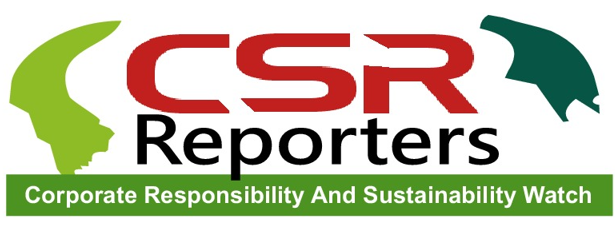
…As businesses journey towards social and environmental responsibility
It was the Covid-19 pandemic that prompted many thoughtful initiatives, such as going digital to reduce carbon footprints. Many corporations worldwide have pledged to reduce greenhouse gas (GHG) emissions and invest in projects to alleviate the effects of climate change.
While achieving net zero is a monumental assignment, the ESG framework could help Nigerian businesses analyse the more significant impact of their activities and implement CSR policies, accordingly.
To say it like it really is, ESG is a fantastic approach to protecting organisations against potential risks.
Environmental, or the ‘E’ in ESG, analyses how a company acts as an environmental steward. The “E” factor analyses a company’s usage of natural resources and the environmental impact of its operations, both directly and indirectly, through its supply chains.
It evaluates the company’s resource use, such as power, fuel, and paper, as well as green or eco-friendly or decarbonising initiatives, the use of renewable energy, and commitments to safeguard natural resources, among others.
The ‘S’ factor concerns human rights and equity—an organisation’s relations with people and policies affecting individuals, groups, and society. This might range from something as simple as how the company treats its co-workers to something as far-reaching as its impact on consumers and other stakeholders.
It considers working conditions, pay parity, labour rights, product safety, community relations, supply chain transparency, diversity and inclusion, and many more. These elements assess the organisation’s ability to meet its human commitments in operations, value chains, and local communities.
Governance, symbolised by the letter ‘G’ in the acronym ESG, examines how a firm operates and makes decisions. It addresses board diversity, executive pay, and shareholder rights. It refers to internal practices and policies that support effective decision-making and legal compliance, such as anti-corruption, anti-bribery, responsible procurement guidelines, market competitiveness and risk management.
Investors prefer organisations with solid governance policies in place since it helps ensure the company is run effectively and ethically. Good governance is necessary for all businesses, but it is particularly essential for publicly listed companies.
A company can use several reporting frameworks to define, measure, and disclose ESG-related data. The Global Reporting Initiative (GRI) guideline is one common framework. Thousands of companies across the world follow this sustainability reporting framework.
The GRI framework guides organisations in engaging all business and non-business functions, identifying the top critical concerns (material topics) to their sustainability, ranking them using a matrix, and bringing commitments across teams to set goals on the material topics and work towards achieving the goals.
Companies can then report on how far they have progressed on the goals through their annual report, internal corporate communications, and sustainability report (sometimes called ESG report to highlight the ESG results). Some businesses publish an integrated annual report, which includes sustainability or ESG metrics. This entire reporting exercise helps a company become more transparent and resilient in its current and future territories.
When introducing ESG measurements, an organisation may consider establishing its starting point (the baseline).
First, determine the most significant topics (materials) on which ESG should work. Then, assess with the investors, board, co-workers, and customers to identify major ESG priority areas (using a materiality matrix). Then, educate the people on various ESG standards, frameworks, and regulations. Finally, and most importantly, allocate resources and create strategies with accountability metrics.
Summarily, CSR helps a company communicate its sustainability commitments, develop a responsible business reputation, increase brand credibility and consumer loyalty, and attract and retain better personnel, whereas ESG supplements CSR and, more precisely, measures these efforts. It helps companies establish quantifiable targets that illustrate their approach and where they are on their sustainability journeys.









